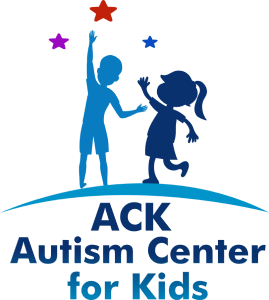Autism Centers: DBT Therapy for Kids and Teens with Autism -Autism centers provide a variety of services tailored to meet the needs of children and teens with autism spectrum disorder (ASD). One of the most effective therapeutic approaches used in these centers is Dialectical Behavior Therapy (DBT). This therapy, originally developed for borderline personality disorder, has been adapted to address the unique challenges faced by individuals with autism. This article will explore how DBT is utilized in autism centers, its benefits, and its implementation for children and teens with autism.
Thank you for reading this post, don't forget to subscribe!
Dialectical Behavior Therapy (DBT)-Table of Contents
DBT Therapy For Kids-Understanding Autism Spectrum Disorder
Autism Spectrum Disorder (ASD) is a developmental disorder characterized by difficulties in social interaction, communication challenges, and repetitive behaviors. The spectrum nature of the disorder means that individuals with autism can exhibit a wide range of abilities and behaviors. Early diagnosis and intervention are crucial in helping children and teens with autism develop essential life skills.
What is Dialectical Behavior Therapy (DBT)?
DBT is a type of cognitive-behavioral therapy that focuses on teaching individuals skills to manage their emotions, cope with stress, and improve their relationships with others. It combines standard cognitive-behavioral techniques for emotion regulation and reality-testing with concepts of mindful awareness, distress tolerance, and acceptance. DBT is particularly effective for individuals who experience intense emotions or childhood trauma and have difficulty regulating them.
DBT Therapy for Kids and Teens with Autism The Four Modules of DBT
DBT consists of therapeutic techniques ,four main modules:
- Mindfulness: This module teaches individuals to be present in the moment and to observe their thoughts and feelings without judgment.
- Distress Tolerance: This module focuses on developing coping strategies to deal with crisis situations without resorting to harmful behaviors.
- Emotion Regulation: This module helps individuals understand and manage their emotions more effectively.
- Interpersonal Effectiveness: This module teaches skills to improve relationships, communicate effectively, and set healthy boundaries.
Benefits of DBT for Kids and Teens with Autism
DBT Therapy for Kids and Teens with Autism -Implementing DBT in autism centers provides numerous benefits for children and teens with autism. These benefits include:
- Improved Emotional Regulation: Children and teens with autism often struggle with intense emotions and meltdowns. DBT teaches them how to recognize and manage these emotions, leading to fewer emotional outbursts.
- Enhanced Social Skills: DBT’s interpersonal effectiveness module helps children and teens with autism develop better social skills, improving their ability to form and maintain relationships.
- Increased Distress Tolerance: Many individuals with autism have low frustration tolerance. DBT equips them with tools to handle distressing situations without resorting to negative behaviors.
- Better Self-Awareness: Mindfulness practices in DBT help individuals with autism become more aware of their thoughts and feelings, fostering greater self-understanding and acceptance.
- Reduction in Problematic Behaviors: By addressing the root causes of emotional dysregulation, DBT can lead to a decrease in problematic behaviors often seen in autism, such as aggression and self-injury.
DBT Therapy for Kids and Teens with Autism-Implementing DBT in Autism Centers
Autism centers that offer DBT typically follow a structured approach to ensure that the therapy is tailored to the needs of children and teens with autism. This includes:
- Assessment and Individualized Treatment Plans: Before starting DBT, a thorough assessment is conducted to understand the individual’s specific needs and challenges. Based on this assessment, a personalized treatment plan is developed.
- Individual Therapy Sessions: These sessions focus on the child’s specific issues and work through the DBT modules in a one-on-one setting.
- Group Skills Training: Group sessions provide an opportunity for children and teens to learn DBT skills in a supportive environment alongside their peers. These sessions often include role-playing and other interactive activities.
- Family Involvement: Involving families in the therapy process is crucial. Family members are trained in DBT skills to support their child at home, ensuring consistency and reinforcement of the skills learned in therapy.
- Skills Coaching: Between sessions, individuals can access skills coaching to help them apply DBT techniques in real-life situations.
DBT Therapy for Kids and Teens with Autism-Case Study: DBT in Practice at an Autism Center
To illustrate the effectiveness of DBT, let’s consider a case study from an autism center.
Case Study: John’s Journey with DBT
John, a 15-year-old with high-functioning autism, had been experiencing frequent emotional meltdowns and difficulties in social interactions. His parents sought help from an autism center that specialized in DBT.
Assessment: The initial assessment revealed that John had intense anxiety and difficulty managing his emotions, leading to aggressive outbursts and social withdrawal.
Individual Therapy: John began individual DBT sessions, where he learned mindfulness and emotion regulation techniques. He practiced observing his feelings without judgment and identifying triggers for his anxiety.
Group Skills Training: John joined a DBT skills group with other teens. Through role-playing and interactive activities, he learned interpersonal effectiveness skills, such as how to initiate conversations and handle social rejection.
Family Involvement: John’s parents participated in family sessions, where they learned DBT skills to support John at home. They practiced distress tolerance techniques together, creating a calmer home environment.
Progress: Over six months, John showed significant improvement. His meltdowns decreased, and he became more confident in social situations. The combination of individual therapy, group training, and family support helped John apply DBT skills in his daily life.
Challenges and Considerations
While DBT has proven effective for many children and teens with autism, it is not without challenges. Some of the common challenges include:
- Adaptation of Techniques: Traditional DBT techniques may need to be adapted to suit the cognitive and developmental levels of children with autism.
- Consistency and Reinforcement: Ensuring that skills learned in therapy are consistently reinforced at home and school can be challenging.
- Engagement: Keeping children and teens engaged in therapy requires creative and flexible approaches, such as incorporating their interests into therapy sessions.
Future Directions
As research on DBT for autism continues to grow, future directions include:
- Customized DBT Programs: Developing more customized DBT programs that address the specific needs of children and teens with different levels of autism.
- Technology Integration: Using technology, such as apps and virtual reality, to enhance DBT skills training and engagement.
- Training for Practitioners: Increasing the availability of training programs for therapists to specialize in DBT for autism.
- Longitudinal Studies: Conducting long-term studies to evaluate the sustained impact of DBT on children and teens with autism.
Is DBT Suitable for Autism?
Dialectical Behavior Therapy (DBT) is suitable for individuals with autism, especially those who have co-occurring emotional or behavioral issues, such as anxiety, depression, or self-harm behaviors. DBT focuses on teaching skills in four key areas: mindfulness, distress tolerance, emotion regulation, and interpersonal effectiveness. These skills can be particularly beneficial for individuals with autism, helping them manage emotional dysregulation and improve social interactions.
Benefits of DBT for Autism:
Emotion Regulation: Helps individuals with autism understand and manage their emotions more effectively.
Interpersonal Effectiveness: Teaches social skills and strategies for effective communication and relationship-building.
Distress Tolerance: Provides tools for coping with stress and distress without resorting to negative behaviors.
Mindfulness: Encourages present-moment awareness, which can help reduce anxiety and improve focus.
Which Type of Therapy is Most Commonly Used with Children with Autism?
The most commonly used therapy for children with autism is Applied Behavior Analysis (ABA). ABA is widely recognized for its effectiveness in improving various skills and reducing problematic behaviors in children with autism.
Key Components of ABA:
Behavioral Interventions: Focus on increasing desired behaviors and decreasing undesired behaviors through positive reinforcement.
Skill Development: Helps children develop communication, social, and adaptive skills.
Data-Driven: Uses ongoing data collection to monitor progress and adjust interventions as needed.
Individualized Plans: Tailors interventions to each child’s specific needs and strengths.
What is the Best Therapy for Children with ASD?
There is no one-size-fits-all answer to the best therapy for children with Autism Spectrum Disorder (ASD), as the effectiveness of a therapy can vary based on the individual child’s needs, strengths, and challenges. However, several therapies have been shown to be highly effective:
Applied Behavior Analysis (ABA): Widely considered the gold standard for autism treatment, ABA focuses on improving specific behaviors and skills through structured and consistent reinforcement.
Speech and Language Therapy: Helps children improve their communication skills, both verbal and non-verbal.
Occupational Therapy (OT): Focuses on enhancing daily living skills, fine motor skills, and sensory processing abilities.
Social Skills Training: Teaches children how to interact appropriately with peers and adults, which is crucial for social integration.
Parent-Child Interaction Therapy (PCIT): Helps improve the quality of the parent-child relationship and teaches parents effective behavior management techniques.
Factors to Consider:
Individual Needs: The best therapy is one that addresses the child’s specific developmental needs and goals.
Family Involvement: Therapies that involve and train family members tend to be more effective, as they ensure consistency and reinforcement in the child’s natural environment.
Evidence-Based: Therapies with a strong evidence base and demonstrated effectiveness should be prioritized.
What is the Age Range for DBT?
Dialectical Behavior Therapy (DBT) is traditionally used for adolescents and adults, typically starting around the age of 12 and up. However, DBT has been adapted for younger children, often referred to as DBT-C (DBT for Children).
Age Range for DBT:
Adolescents and Adults: The standard DBT program is designed for individuals aged 12 and older.
DBT for Children (DBT-C): Adaptations are available for children aged 6-12, focusing on age-appropriate strategies for emotion regulation, mindfulness, and interpersonal skills.
DBT for Different Age Groups:
Adolescents: Focuses on building life skills, managing intense emotions, and improving relationships.
Children: Tailors DBT principles to be more understandable and applicable for younger children, often involving parents or caregivers more directly in the therapeutic process
DBT offers a comprehensive and effective approach to addressing the emotional and social challenges faced by children and teens with autism. By focusing on emotional regulation, interpersonal effectiveness, and mindfulness, DBT helps individuals with autism build resilience, improve their relationships, and achieve personal growth. Autism centers that provide DBT play a crucial role in supporting the mental health and well-being of children and teens with autism, offering them the tools they need to navigate the complexities of their lives.
By exploring the implementation, benefits, and challenges of DBT in autism centers, this article highlights the significant positive impact this therapeutic approach can have on the lives of children and teens with autism. With continued research and adaptation, DBT holds promise for even greater success in the future.
